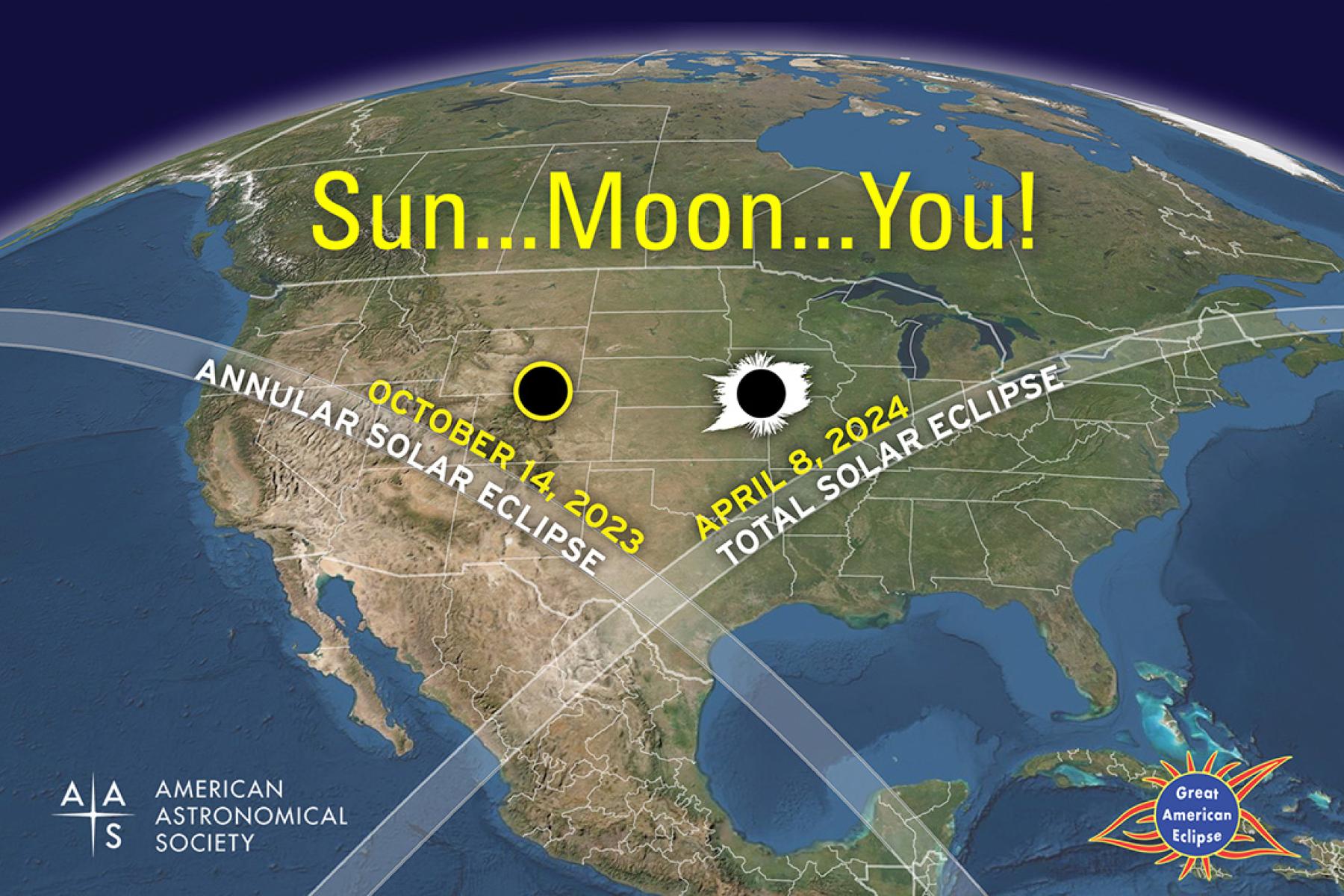


A rare total solar eclipse is set to occur on April 8th, providing a once in a lifetime opportunity to witness this phenomenon. However, viewers must ensure they have the proper gear to safely view the eclipse. This includes specialized eye protection, such as eclipse glasses or handheld solar viewers, as regular sunglasses are not sufficient. It's important to note that glasses from the 2017 eclipse should not be reused, and viewers must follow safety guidelines to avoid causing damage to their eyes.
Total Solar Eclipse of April 8, 2024: A Celestial Extravaganza
On April 8, 2024, a rare and awe-inspiring astronomical event will occur: the total solar eclipse. This celestial phenomenon, where the moon completely blocks the sun's disk, will provide a captivating spectacle visible across a narrow path from Mexico to Canada.
Background on Solar Eclipses
A solar eclipse occurs when the new moon passes directly between the sun and Earth. As the moon's shadow falls upon Earth, it creates a path of totality, where the sun appears to be completely hidden for several minutes.
Total solar eclipses are relatively rare, occurring only once or twice a year. The path of totality, which can span hundreds of kilometers, is always moving, making each eclipse a unique and unforgettable experience.
Safety Precautions for Eclipse Viewing
It is crucial to emphasize that solar eclipses must be viewed safely. Direct sunlight can damage the eyes, especially during an eclipse when the sun's brightness is momentarily concentrated.
Specialized eye protection, such as certified eclipse glasses or handheld solar viewers, should be used at all times when viewing the eclipse, even during the moments of totality. Regular sunglasses are not sufficient to protect the eyes from the sun's harmful rays.
Eclipse Glasses and Solar Viewers
Eclipse glasses and handheld solar viewers are designed to filter out the vast majority of the sun's harmful rays while allowing viewers to see the eclipse. These devices are typically made from a special material that blocks all but a safe amount of sunlight.
It is important to note that eclipse glasses from the 2017 eclipse should not be reused. The material used in these glasses can degrade over time, making them less effective at protecting the eyes.
Top 5 FAQs about Solar Eclipses
1. How long will the total eclipse last?
The duration of the total eclipse varies along the path of totality. In some areas, it can last up to 4 minutes and 28 seconds.
2. Where can I view the total eclipse?
The path of totality will cross Mexico, the United States, and Canada. For specific viewing locations and times, check reputable astronomy websites or apps.
3. What is the weather outlook for the eclipse?
Weather conditions can impact the visibility of the eclipse. Eclipse watchers should monitor weather forecasts and have backup viewing plans in case of cloud cover.
4. Can I use my camera or phone to photograph the eclipse?
Yes, it is possible to photograph the eclipse using a camera or smartphone. However, it is essential to use proper filters to protect the camera's sensor from the sun's intense light.
5. What other precautions should I take while watching the eclipse?
In addition to eye protection, viewers should avoid looking directly at the sun through binoculars or telescopes. They should also wear sunscreen, a hat, and comfortable clothing to enjoy the eclipse safely and comfortably.

A remote monitoring camera operated by the US Geological Survey captured stunning visuals of the recent volcanic eruption at Hawaii's Kilauea Volcano. The footage showed lava fountains up to 100 feet high and the raw power of nature as the lava eventually engulfed the camera. This eruption, known as Episode 38, was the latest in a series of eruptions that have been occurring since December last year. However, according to USGS, another episode could take place in the near future.

Indian Prime Minister Narendra Modi virtually inaugurated Skyroot Aerospace's new Infinity Campus in Hyderabad and unveiled their first orbital launch vehicle, the Vikram-I. During the event, PM Modi praised India's advancements in space technology and spoke about the importance of private companies like Skyroot in driving innovation in the space sector. The Infinity Campus, equipped with state-of-the-art facilities, has the capacity to produce one rocket per month, marking a significant milestone in India's private space manufacturing capability. Skyroot Aerospace, founded by former ISRO engineers, has quickly become a prominent player in India's growing space industry, with the successful launch of Vikram-S, the country's first privately built sub-orbital rocket.

We all experience changes in our mood, whether it's feeling happy and content or irritated and moody. But what are the underlying factors that contribute to these changes? This article from Medindia explores the top 10 things that can affect our mood, from physical health to environmental factors. It also provides tips on how to avoid these mood-altering triggers and maintain a positive state of mind. With a focus on promoting overall well-being, Medindia's policies align with the UN's Sustainable Development Goals, making it a reliable source of information for health and wellness.

A recent report by Public Health Scotland has shown a steep increase in flu cases and hospitalizations in Scotland. The numbers have more than doubled from the previous week, with a higher intensity observed in younger age groups. Experts are warning of a long flu season and a new variant of the illness that is spreading more easily. Health Secretary Neil Gray has assured the public that there are enough doses of flu vaccine available in the country.

The observation of National Pollution Control Day on 2 December serves as a timely reminder of India's struggle with escalating pollution levels. The recent years have seen a sharp increase in toxic particles and hazardous emissions, causing severe health issues and environmental damage. The ongoing pollution emergency calls for more stringent regulations, better urban planning, and increased public engagement to mitigate the crisis.

As World AIDS Day approaches, conversations around HIV prevention in India are becoming more open and informed. In particular, there is growing interest in PrEP (pre-exposure prophylaxis), a medicine that offers strong protection against HIV when used correctly. With rising awareness and more accessible sexual-health services, doctors are seeing a steady rise in patients asking about PrEP as a proactive health choice. This signals a shift towards informed prevention and a stigma-free dialogue surrounding HIV.

ISRO has been making continuous efforts to establish contact with the Vikram lander and Pragyan rover, which were put into sleep mode earlier this month, ahead of the lunar night. However, the prolonged spell of cold weather conditions, reaching up to -150 degrees Celsius, has made it difficult for them to wake up. With the sunrise on the Moon's south polar region and their solar panels believed to be optimally charged now, ISRO is hoping to revive the lander and rover and continue with their experiments and studies. The latest update from ISRO is that the plan to reactivate them has been delayed to September 23 due to the extreme lunar weather conditions.

Monsoon season may bring romantic vibes, but it's also a nightmare for contact lens wearers. Rainwater contains bacteria and pollutants that can cause eye infections, especially when wearing contact lenses. Ophthalmologists recommend using glasses instead and practicing good hygiene to avoid irritation and infection.

India's first human spaceflight mission, Gaganyaan, is one step closer to reality as ISRO successfully tested the main parachutes for the mission's Crew Module. The test, conducted at the Babina Field Firing Range in Uttar Pradesh, is part of the qualification process for the Gaganyaan parachute system. The system, which includes 10 parachutes of different types, is designed to ensure the safe and stable descent of astronauts returning to Earth. This milestone test marks a crucial step forward for India's ambitious space exploration goals.

As World Pneumonia Day is observed on November 12, experts are drawing attention to the dangerous link between air pollution and respiratory illnesses. In India, the post-Diwali smog adds to the already high levels of pollution, increasing the risk of pneumonia, particularly among vulnerable populations. While outdoor air pollution is often blamed, experts emphasize that poor indoor air quality also plays a significant role in triggering and worsening respiratory infections. Health professionals are urging for better air quality regulations and precautions to prevent this deadly connection between pollution and pneumonia.